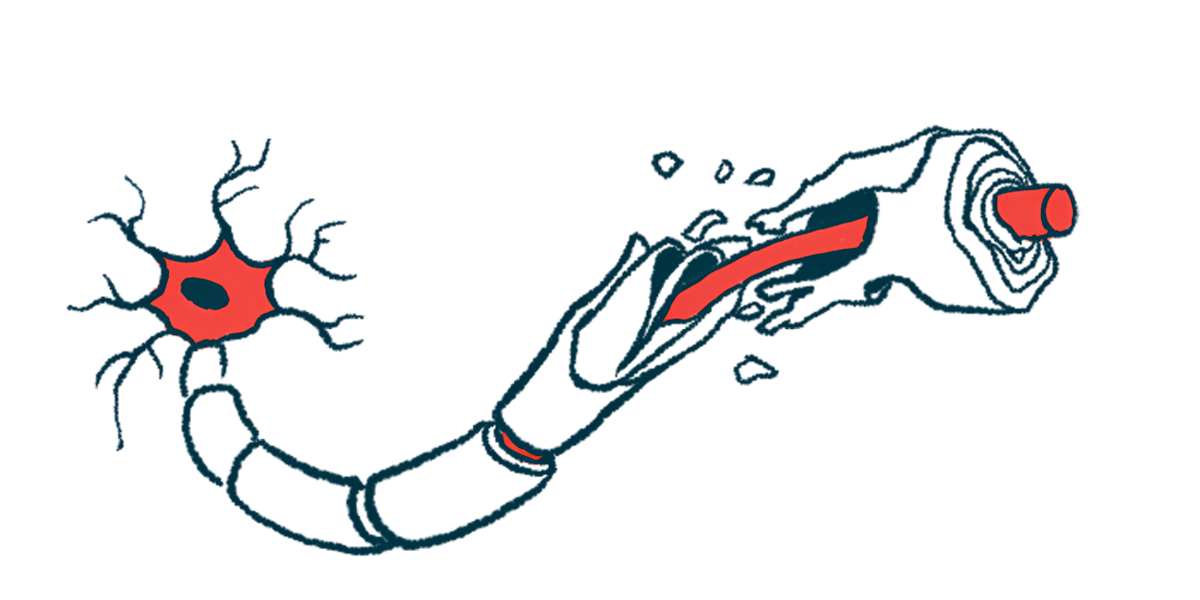Protein found to be a natural brake on myelin production in the brain
Blocking the protein in mice led to better motor coordination
Written by |

Researchers have identified a protein that naturally slows myelin production — a finding that could lead to ways to repair myelin damage in multiple sclerosis (MS) and other neurological disorders.
In mice, the protein (called Tfii-i) was found to limit the activity of genes that drive myelin formation. When researchers suppressed Tfii-i in myelin-producing cells, myelin levels increased, nerve signal conduction became faster, and the animals showed better motor coordination and other behavioral improvements.
“This study is among the few to identify a mechanism for increasing myelin levels in the brain,” Boaz Barak, PhD, a professor at Tel Aviv University (TAU) in Israel, said in a university news story. “Its results may enable the development of future therapies that suppress Tfii-i activity in myelin-producing cells, to restore myelin in a wide variety of degenerative and developmental diseases in which myelin is impaired.”
“We believe this fundamentally new approach holds great therapeutic potential,” Barak said.
The study appeared in Nature Communications under the title, “Gtf2i-encoded transcription factor Tfii-i regulates myelination via Sox10 and Mbp regulatory elements.”
Why scientists are focused on myelin repair for MS treatment
Myelin is a fatty coating that wraps around nerve fibers, helping electrical impulses travel quickly and efficiently. In MS, the immune system mistakenly attacks this coating, damaging both the myelin and nerve cells. This disruption slows or blocks communication within the brain and spinal cord.
Myelin damage has also been associated with other neurodegenerative diseases, such as Alzheimer’s disease, and certain neurodevelopmental syndromes.
The Gtf2i gene, which encodes Tfii-i, has been linked to several neurodevelopmental and psychiatric conditions, including Williams syndrome, schizophrenia, and anxiety disorders. In a recent study, researchers at TAU found that mice lacking this gene had myelin defects, but its role in myelin formation remained unclear.
In the new study, researchers deleted the Gtf2i gene only in myelin-producing cells in mice, leaving all other cells intact. This allowed them to test how the loss of Tfii-i affected myelination and nerve function.
“We investigated the role of a protein called Tfii-i, known for its ability to increase or decrease the expression of many genes crucial for cell function,” Barak said. “While Tfii-i has long been linked to abnormal brain development and neurodevelopmental syndromes, its role in myelin production had not been studied until now.”
The results showed Tfii-i normally binds to and regulates key myelin-related genes in oligodendrocytes, the cells that produce myelin in the brain and spinal cord. These genes included those encoding Mbp, a central component of myelin, and Sox10, an essential protein for oligodendrocyte development. This resulted in thicker myelin sheaths around nerve fibers.
The same effect was seen in Schwann cells, which create myelin for nerves outside the brain and spinal cord. Without Tfii-i, these cells produced thicker myelin around the sciatic nerve, the long nerve that runs down the back of each leg.
As a result, electrical impulses traveled faster across the corpus callosum, the large bundle of nerve fibers connecting the two sides of the brain. Mice without Tfii-i also performed better on a rotarod test, indicating “improved balance and motor coordination,” the team noted.
Deleting Tfii-i also appeared to increase social interactions but led to higher anxiety-like behaviors.
“We found that in the absence of Tfii-i, the myelin-producing cells generated higher amounts of myelin proteins,” said Gilad Levy, PhD, a researcher at TAU and the study’s first author. “This resulted in abnormally thick myelin sheaths, which enhanced the conduction speed of electrical signals along the neural axons.”
“These improvements resulted in a significant enhancement of the mice’s motor abilities, including better coordination and mobility, along with other behavioral benefits,” Levy added.






